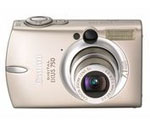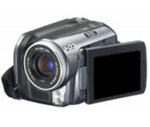Which Video Camera for Video Blogs?
Bob asks, What do you recommend for a video camera for video blogs at a reasonable cost?
No matter what video recording solution you currently own, the real key is to just get out there and start creating. You can always purchase the perfect tools later. Having said that, it's important to consider several factors (including cost) when you're planning to video blog. Recommending a particular video camera or style of camera depends greatly on the subject and style of your video blog. If you are always providing talking head commentary with very little on screen action, camera options more open than if you plan to shoot a weekly video serial with several participants and scene changes. Here are the key things to think about:
1) Who is your target audience?
2) How is your video blog staged?
3) How big is the video camera?
4) How much time does it take to import and edit the files?
5) What format do you plan to distribute the files in?
Who is your target audience?
Target audience is one primary factor in determining which type of camera to use. If the audience is anyone who might stumble on to your work, the bar is lower than if you are trying to convey a specific message to corporate clients or using your video blog as the pilot project showcasing a certain set of video skills.
How is your video blog staged?
Whenever you shoot video, you might spend 5 seconds or 5 minutes preparing to shoot. This is staging. Think about whether your video blog will be completely ad hoc using a handheld camera at arms length with your smiling face starring, whether you have a basic set and tripod mount, or whether you are truly staging a production of some kind with multiple participants and scenes.
In the ad hoc scenario, the video function on a digital still camera might work great. For tripod mounting, virtually any digital video camera might work and for complex productions, you want to be sure you are using a 3CCD digital video camera.
How big is the video camera?
 Camera size is important because if you video blog on the go, you want something portable. A larger form factor digital video camera almost always results in better looking video with more color depth, but is more likely to stay at home when you don't want to be encumbered by extra bulk in a pocket or bag. A pocket-sized camera, like one of the newer digital video cameras that record to SD or a small form factor digital still camera like the Canon Digital Elph series easily goes everywhere you go. If you shoot in a stationary location, video camera size doesn't matter, but factors like image quality might.
Camera size is important because if you video blog on the go, you want something portable. A larger form factor digital video camera almost always results in better looking video with more color depth, but is more likely to stay at home when you don't want to be encumbered by extra bulk in a pocket or bag. A pocket-sized camera, like one of the newer digital video cameras that record to SD or a small form factor digital still camera like the Canon Digital Elph series easily goes everywhere you go. If you shoot in a stationary location, video camera size doesn't matter, but factors like image quality might.
How much time does it take to import and edit your video?
 The more time required to import and edit your video, the more a video blog starts to feel like work. In many cases, when something is too much like work it gets abandoned when there's no clear advantage to continuing. Recording to a digital card like the JVC Everio pictured here means faster than real time transfer of files. If you are a one take wonder, this means the raw footage is immediately ready for upload with no waiting to import tape and output a file. If you require minor editing, the time investment is minimized because you aren't waiting the same number of minutes importing you just spent shooting.
The more time required to import and edit your video, the more a video blog starts to feel like work. In many cases, when something is too much like work it gets abandoned when there's no clear advantage to continuing. Recording to a digital card like the JVC Everio pictured here means faster than real time transfer of files. If you are a one take wonder, this means the raw footage is immediately ready for upload with no waiting to import tape and output a file. If you require minor editing, the time investment is minimized because you aren't waiting the same number of minutes importing you just spent shooting.
Keep in mind that I'm not referring to the SD cards used by digital video cameras to record still images. I'm specifically referring to video cameras that record video direct to SD.
What format do you plan to distribute the files in?
The standard in video blogging is 320x240 video in Flash, WMV, MOV or MP4. Flash is fast becoming the online streaming standard for video with MP4 h.263 video becoming the standard for downloads because of universal iPod and PSP compatibility (let's hope Sony adds h.264 someday soon). Depending on which camera you select for recording and the list of other factors above, you might be able to simply record and upload a file direct from your camera. For instance, my cell phone records MP4 video compatible with both iPod and PSP form factors, although the image size is smaller than I would like.
Recording format is important for simplifying distribution. Camcorders with record-to-DVD support cause headaches for many people by dramatically increasing the hassle of working with video during editing. For widest compatibility, starting with a miniDV tape or hard disk based recorder and importing DV-AVI requires the least conversion hassle when you're saving files in multiple formats. If you use a digital still camera, the format is typically AVI, MP4, MOV, or WMV. The trick here becomes figuring out which software will convert your video to the format you need for publishing.